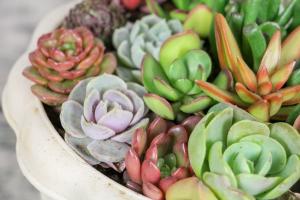Should I Prune My Tomato Plants?
One of the most important decisions you can make as a gardener is whether or not to prune your tomato plants. Depending on your goals, there are several different approaches you can take.
Benefits of Pruning
Pruning your tomato plants has a number of potential benefits. First and foremost, it can help to increase your plant's yield. By carefully removing the suckers that grow between the main stem and the side branches, you can encourage your plant to put its energy into producing fruit instead of foliage.
In addition to increasing your yield, pruning can also help to improve air circulation around your plants. This can reduce the risk of diseases like powdery mildew and can also help to ensure that pollinators have easy access to your flowers.
Drawbacks of Pruning
While there are certainly benefits to pruning your tomato plants, there are also some drawbacks to consider. For one thing, removing too many suckers can actually reduce your plant's yield by depriving it of the energy it needs to produce enough fruit.
Additionally, pruning can be time-consuming and requires a fair amount of knowledge and skill. If you're not careful, you can accidentally damage your plant or remove too many leaves, which can stunt its growth or even kill it.
When to Prune
If you've decided to prune your tomato plants, it's important to do so at the right time. Generally speaking, it's best to wait until your plants are at least a foot tall and have several sets of leaves before pruning. This will give them the time they need to establish a strong root system and will ensure that you're not removing too much foliage too early on.
When pruning, it's best to use clean, sharp shears to make clean cuts. Make sure to remove any suckers that are growing below the first flower cluster, as well as any that are larger than a pencil eraser. Be careful not to remove too much foliage at once, and avoid pruning your plants during hot, dry weather.
Alternative Approaches
If you're not comfortable pruning your tomato plants or simply don't have the time or energy to do so, there are a few alternative approaches you can try. One option is to simply leave your plants alone and let them grow naturally. While this may result in a slightly lower yield, it can be a good choice if you're looking for a low-maintenance approach.
Another option is to use a trellis, cage, or other support structure to help your plants grow vertically. This can help to reduce the need for pruning and can also improve air circulation around your plants.
Conclusion
Ultimately, whether or not you should prune your tomato plants depends on your goals, your level of experience, and the amount of time and effort you're willing to invest. While pruning can be a powerful tool for increasing yield and improving plant health, it's not always necessary or the best choice for every gardener.

 how many times do yo...
how many times do yo... how many planted tre...
how many planted tre... how many pine trees ...
how many pine trees ... how many pecan trees...
how many pecan trees... how many plants comp...
how many plants comp... how many plants can ...
how many plants can ... how many plants and ...
how many plants and ... how many pepper plan...
how many pepper plan...
































